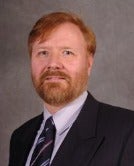John Currie

John F. Currie
Professor
534 Reiss Science Building
Telephone: (202) 687-3919, E-mail: curriej@georgetown.edu
Prof. Currie earned his B.Sc. in Mathematics and Physics from the University of Toronto, and a Ph.D. from Cornell University in Physics. His postdoctoral work was at MIT both in Physical Chemistry and in Materials Science and Engineering, later becoming a Professional Engineer in Electrical Engineering and in Engineering Physics. In over three decades he has taught over five thousand graduate and undergraduate students in physics, engineering, general science, and pre-medical programs. Before Georgetown, he taught in Canada as an Engineering Science professor at Ecole Polytechnique of the University of Montreal, Canada’s largest Engineering School, and in Electrical Engineering at McGill University, Canada’s most widely known Engineering School. He has supervised over thirty Ph.D. and Masters of Science students, as well as dozens of postdoctoral fellows. Most of these students have gone on to successful careers in Industrial Physics in companies or as entrepreneurs. He has supervised dozens of undergraduates in research projects that have contributed to those students pursuing studies in science, engineering, and medicine.
Current Research
Health Microsystems, Micro-sensors, and Device Physics
Professor Currie is an inventor of several unique solid-state microsystem technologies for health monitoring and drug delivery. With grant assistance through the Defense Advanced Research Projects Agency (DARPA), he developed and tested in-vivo, specific band-aid-like prototypes for painless continuous monitoring through the skin of important biomolecules such as glucose and lactate as found in interstitial fluid. He is working to extend these important results to the continuous quantitative measurement of entire panels of ions, gases, and biomolecules in living tissues and people. These novel measurements might in turn reveal new medical science and suggest new methods for medicine to maintain health and effectively detect and combat disease. One application example is the strict control of glucose concentrations and insulin injections in diabetics. The quantitative measurement paradigm requires the invention of new devices, made up of novel materials, fabricated using atomic and molecular deposition and patterning instruments, and analyzed using adapted methods.
Physics and Chemistry of Thin Film Materials, Surfaces, and Interfaces for Nanometer Science
The micro-systems designed and fabricated for health applications require the creation of novel materials and patterns on the atomic and nanometer scale, and often their assembly into multilayer structures. These materials must be characterized using a variety of analytical techniques within our lab such as X-ray Photoelectron Spectroscopy, Scanning Auger Electron Spectroscopy, Electrical and Electrochemical, and Impedance Spectroscopy as well as techniques housed within the department such as SEM, TEM, AFM, or in outside collaborations such as XRD, IRS, Raman, ERD, and SIMS. The bulk and surface properties measured determine how the layers perform mechanically, electrically, optically, and chemically, as well as how the layers adhere one to another.
Solid State Technology
We develop and implement the tools used in the production of electronic materials and devices. We are using vacuum and high vacuum instruments to manipulate solid atomic layers to produce specific nano and micro-structured layers. The techniques being developed include sputtering, reactive sputtering, collimated and masked sputtering, and reactive ion etching on oxide and polymer films. We are also using electrochemical deposition to deposit solid films containing a rich variety of novel micro and nanostructures, with promising applications in sensor and actuator devices.
Selected Publications
- J. Currie, M. Bodo, and F. Pearce., Novel Non-Intrusive Trans-dermal Remote Wireless Micro-fluidic Monitoring System Casualty Care and Combat Readiness Assessment, NATO- Research and Technology Agency, Human Factors and Medicine SYMPOSIUM on Combat Casualty Care. NATO-HFM-109/RSY, pp 24 (2004).
- A. Gadre, A. Nijdam, J. Garra, A. Monica, M. Cheng, C. Luo, Y. Srivastava, T. Schneider, T. Long, R. White, M. Paranjape, and J. Currie, Fabrication of a Fluid Encapsulated Dermal Patch Using Multi-layered SU-8, Sensors and Actuators A-114, 478 (2004).
- I. C. Ressejac, L. M. Landsberger, J. F. Currie, Bistable microelectrothermal actuator in a standard complementary metal-oxide-semiconductor process, Journal Of Vacuum Science & Technology A18, 746 (2001).
- O. Renault, D. Briand, G. Delabouglise, M. Labeau, and J. F. Currie, (1999), Integration of a sensitive material to a silicon-based device for CO detection, Sensors And Actuators A-Physical 74 (1-3), 225 (1999).
- S. C. Gujrathi, G. Gagnon, V. Fortin, M. Caron, J. F. Currie, L. Ouellet, and Y. Tremblay, Elastic recoil detection using time-of-flight for analysis of TiN/AlSiCu/TiN/Ti contact metallization structure, Nuclear Instruments and Methods in Physics Research B137, 661 (1998).
- D. Briand, M. Labeau, J. F. Currie, and Delabouglise, Pd-doped SnO2 thin films deposited by assisted ultrasonic spraying CVD for gas sensing: selectivity and effect of annealing., Sensors and Actuators B48, 395 (1998).
- A. Essalik, J.-C. Marusic, and J. F. Currie, Study of a New Solid Electrolyte Thin Film Based Micropotentiometric Carbon Dioxide Gas Sensor, J. New. Mat. Electrochem. Syst. 1, 67 (1998).
- J. F. Currie, M. Paranjape, C. C. Peck, R. C. White, T. W. Schneider, Systems and methods for monitoring health and delivering drugs transdermally, US Patent #6,887,202.
- P. Cuireanu, P. Rudkowski, G. Rudkowska, D. Ménard, M. Britel, J. F. Currie, J. O. Ström-Olsen, and A. Yelon, Giant, Magnetoimpedance Effect in Soft and Ultrasoft Magnetic Fibres, J. Appl. Phys. 79, 5136 (1996).
- A. Collins, A. Blumen. J. F. Currie, and J. Ross, Dynamics of domain walls in ferrodistortive materials. I. Theory, Phys Rev. B 19, 3630 (1979).
